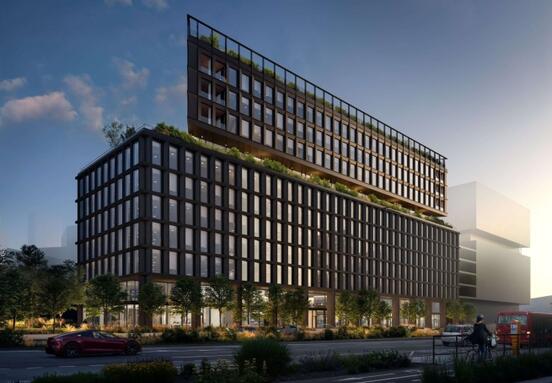Higher investments
The volume of investments in commercial real estate in the region increased by 143 percent year-on-year, following a 70 percent increase in 2024. It is currently reaching values that surprised even the most optimistic forecasts. The Czech Republic attracted investments in the amount of 1.5 billion euros, which is four times more than last year. Although Slovakia does not appear at the top of the ranking, the development in individual segments shows the potential for adaptation and growth, especially in logistics, office and hotel real estate.
“Growing global uncertainty, especially in connection with the US trade policy under Donald Trump, is worrying business professionals. There are growing concerns about renewed protectionism, which is associated with the risks of inflation and a slowdown in economic growth,” warns Grzegorz Sielewicz, Head of Economic & Market Insights at Colliers CEE.
Recent surveys confirm that the European real estate sector and other sectors see geopolitical instability as the biggest threat. Insecurity indices have risen sharply in both the US and Europe, with the European index reaching a record high. Even modest tariffs, such as 10 percent on EU exports, pose a risk, while the key automotive sector in Central and Eastern Europe faces even higher tariffs.
Industry and Logistics
The industrial and logistics real estate sector in the CEE region confirms a significant investment boom. Investments in this segment reached EUR 800 million in the first quarter of 2025, which is three times the volume of last year and a return to the leading position among commercial real estate segments.
Slovakia, as part of the region’s manufacturing and logistics corridor, benefits from this mainly due to its strategic location, developed infrastructure and growing demand for warehousing and distribution capacities. Near-shoring strategies and diversification of supply chains are increasingly moving production and warehousing operations closer to Western European markets.
Despite rising wages, experts say the region remains competitive, with a high-quality workforce and growing investment in research and development. This puts it in a position to benefit from changes in global trade and geopolitical tensions.
Retail keeps pace
The retail sector holds second place in terms of investment volume. Investors in shopping centers and retail parks recorded year-on-year growth of 38 percent, although the growth rate slowed slightly compared to last year.
The basis of growth is domestic consumption, which is supported by growing employment and a slightly improving financial situation of households. Slovakia is approaching the model of countries such as Poland and the Czech Republic, where retail is developing dynamically with an emphasis on a combination of brick-and-mortar stores and digital platforms.
However, changing consumer habits, price sensitivity and persistently high interest rates are making investors more selective. There is growing interest in assets that combine low energy consumption and modern services to support sales.
Offices are coming to life
The office sector recovered beyond expectations in the first quarter of 2025, with more than a threefold increase in year-on-year investment. Significant growth was recorded in particular in Bulgaria (up 806 percent) and the Czech Republic (up 618 percent), where ongoing modernization is combined with flexible working models.
Changes are also taking place in Slovakia, reflecting new tenant expectations. Companies are emphasizing the quality of space, energy efficiency and ESG standards. New office projects are emerging in Bratislava, which are oriented towards greenery, shared spaces and expanded civic amenities.
The development suggests that the office segment has adapted to the post-pandemic changes and transformed them into a competitive advantage. This again increases its attractiveness for investors looking for stable returns in a period of uncertainty.
Hotel boom
The hotel sector recorded the highest growth among all segments, with investment volumes almost nine times higher than in the same period in 2024. The performance of the hotel sector in the first quarter of 2025 was significantly above the five-year average.
In the Czech Republic and Hungary, investment volumes even exceeded or equaled the full-year figures for 2024 in the first three months. Demand is driven by growing tourism, targeted marketing campaigns and the increasing recognition of the region's cities as attractive destinations.
Warsaw and Bucharest are currently among the most sought-after European metropolises in terms of tourism. Slovakia, with its potential in both cultural and nature tourism, has a chance to grow if investment support and promotion are made more effective.
Global Capital
Capital flows in the first quarter of 2025 show changes in the origin of investments. Investors from the CEE-6 group (Bulgaria, Romania, Hungary, the Czech Republic, Slovakia and Poland) accounted for 57 percent of all investment volumes, an increase from 44 percent in 2024.
Other European countries accounted for 18 percent, with the total volume of investments from this group not exceeding 500







